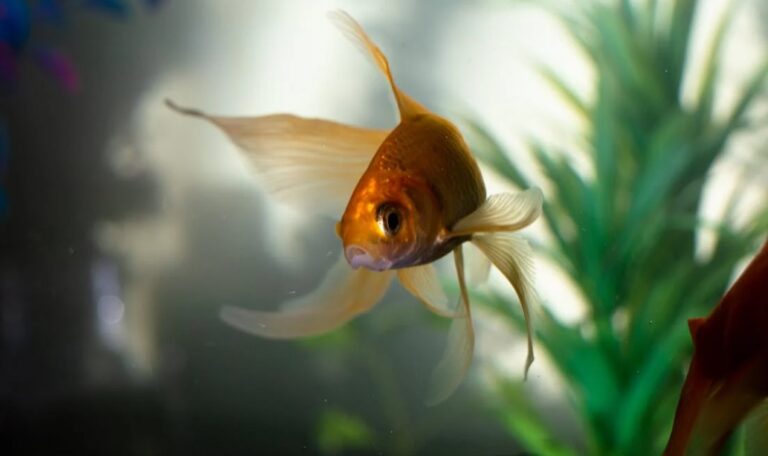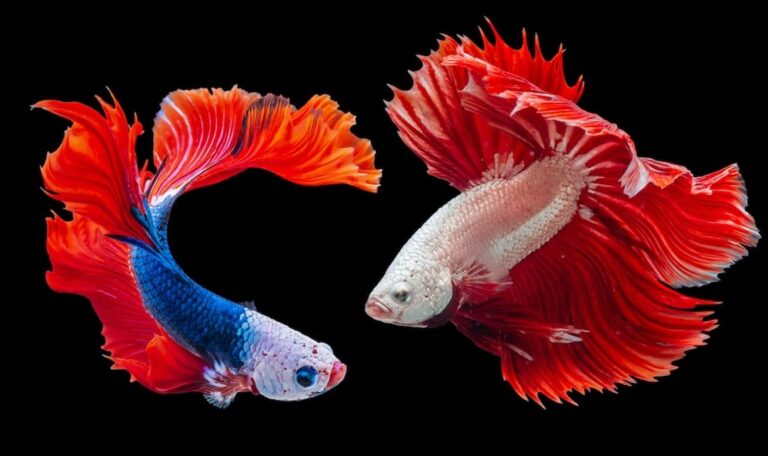Starting a new aquarium isn’t a walk in the park. Some people may make it look easy, but it is easier said than done. Proper knowledge about the fish tank, tank water, and even the type of fish you have is needed. Things like water parameters and how often to change water in fish tank must also be taken into consideration.
Once you know all these things, you can start a new aquarium for your fish while ensuring livable water quality. This article will discuss tips and guidelines to make you a seasoned aquarist that can take care of different types of fish.

Importance of Water Changes
Changing the water regularly promotes a healthy habitat for the fish in the tank.
Uneaten fish food stays in the aquarium and begins to decay. The food eaten by the fish is also released back into the tank through urine and feces. All of these result in high levels of nitrates and phosphates, leading to excessive algae growth. This nuisance algae growth competes with the nutrients supposedly intended for the fish.
The tank also becomes dirty, smelly and laden with bad bacteria from waste debris. Because of this, the oxygen level in the tank is greatly reduced. Along with uncontrolled algal bloom and decreased oxygen level, it can lead to the death of aquatic life inside the aquarium, including fish and corals.
Moreover, aquarium water evaporates over time. Topping up the water to return to its original level isn’t advisable. If you simply add water into the tank, all the waste and chemicals stay in the water. Increased levels of nitrates, phosphates and other elements are still present. The solution is to change the water. This will remove excess elements and debris while providing more water to the tank.
Water Parameters: The Safest Levels for Fish
Setting up your fish tank will make you excited yet anxious at the same time. Aquarists love to see their school of fish thriving and in their healthiest condition. So, they want to ensure that the fish tank water has the right water chemistry.
But what are the appropriate water parameters for fish to live well in a safe environment?
The conditions of the tank water are different for a saltwater aquarium and a freshwater aquarium. For the fish to thrive, you must ensure that the nitrate level and other water parameters are within the desired amounts.
Saltwater Aquarium Water Parameters for Fish
The following water parameters are meant for fish-only saltwater aquariums. A tank with saltwater fish has a broader range of parameters. It is also important to note that some species require specific levels not mentioned in the guideline below. Always research the water parameters required for the specific species you have.
| Water Parameter | Accepted Level |
| Temperature | 72 to 78⁰F |
| Salinity | 1.020 to 1.025 |
| pH | 8.1 to 8.4 |
| Ammonia (NH3) | 0 ppm |
| Nitrite (NO2) | 0 to 150 ppb |
| Nitrate (NO3) | <30 ppm |
| Phosphate (PO4) | <0.2 ppm |
| Phosphorus | <100 ppb |
| Alkalinity | 8 to 12 dKH or 142 to 215 ppm |
| Calcium | 350 to 450 ppm |
| Magnesium | 1,150 to 1,350 ppm |
| Iodine | 0.04 to 0.10 ppm |
| Potassium | 380 to 420 ppm |
| Strontium | 4 to 10 ppm |
| Silica | <3 ppm |
| ORP | 250 to 400 mV |
| Iron | ~0.15 ppm |
| Boron | <10 ppm |
Freshwater Aquarium Water Parameters for Fish
The chart below shows the common types of freshwater aquariums and their designated water parameters. Please note, however, that some species or life cycles may need a more specific level. It is best to research the kind of aquarium fish you have.
| Water Parameter | Freshwater Tropical | African Cichlids | Discus |
| pH | 6.5 to 7.5 | 7.8 to 8.5 | 5.0 to 6.8 |
| Temperature | 72 to 82⁰F | 72 to 82⁰F | 80 to 86⁰F |
| Ammonia | 0 ppm | 0 ppm | 0 ppm |
| Nitrite | 0 to 10 ppb | 0 to 10 ppb | 0 to 10 ppb |
| Nitrate | <50 ppm | <50 ppm | <30 ppm |
| Alkalinity | 65 to 135 ppm | 165 to 300 ppm | 50 to 100 ppm |
| General Hardness | 65 to 200 ppm | 200 to 335 ppm | 50 to 100 ppm |
As you can see from the above charts, there should be no presence of ammonia in either saltwater or freshwater aquariums. Ammonia buildup inside the tank will result in organ and gill damage and may even end up in fish death. A water conditioner can help neutralize ammonia and remove other harmful chemicals like chlorine.
Regular water tests will ensure that the parameters are within the desirable range to promote healthy aquatic life.
How Often Do You Change the Water in a Fish Tank?
A tank can have varied requirements depending on the life it contains. Fish-only tanks require different care from a planted tank. But, if there’s one thing that all tanks agree on, it is the regular water change.
Trace elements and minerals in the aquarium water get used up or removed. Replacing it with fresh water helps maintain the appropriate pH needed in the tank.
So, how often to change water in fish tank?
The aquarium water needs to be changed regularly because it can host different pathogens and harmful chemicals from fish waste, leftover foods, and tap water. Changing the water of a fish tank regularly ensures that the marine life inside it remains in good physical shape.
The water change rate must be customized to your fish’s feeding habits and stocking levels. A regular 25% water change is ideal for most heavy-stocked tanks. For example, a 25% water change may be done for goldfish and large cichlids. But, reef tanks and Tanganyikan cichlids may prefer partial water change at 10% to 15% each week.
The frequency of changing water also depends on the tank size and the number of fish in it. A larger tank may need more frequent change compared to a small one. Some aquarists change aquarium water weekly, while some prefer two to four-week intervals.
A routine water change promotes clean water and good bacteria that are beneficial for the aquatic life inside the tank. When doing a weekly water change, you can use a gravel cleaner or stir the gravel during the process. Do not change more than 50% of the water level since this can eliminate the good bacteria in the tank while making the fish bowl cloudy.
How to Change the Water in a Fish Tank

Now that you know how often to change water in fish tank, the next question you might have is how to do it.
Incorporating new water into the fish tank is actually easy now that you understand the required parameters. As you know, frequent water changes will keep debris and harmful bacteria away.
Whether you have freshwater fish, tropical fish, or any other fish, your fish bowl needs to be seamlessly clean. Otherwise, nuisance algae growth may become a problem, as well as increase levels of nitrates and other components.
To change the water in the aquarium, follow these steps:
- To change the aquarium water, use a siphon tube and a bucket
- Place one end of the tube into the aquarium and the other end in a bucket
- Start to suction the water from the tank into the bucket. Make sure to keep the percentage of water being removed in check. Also, be careful not to suck small fish into the tube
- Throw away the contaminated tank water. Fill the bucket with a mixture of cold water and a bit of warm water. Check the temperature on the tank and the water you are about to add to ensure that they have the same temperature
- You can use tap water as long as it is safe for the fish. Adding a liquid dechlorinator is one way to remove chlorine from tap water and make it safe for aquatic life. Choose your liquid dechlorinator carefully and use it as directed in the manufacturer’s instructions
- Pour the water mixture into the tank to complete the water change
Additional Notes
- Algae growth and waste accumulate after the last water change. So, it is best to vacuum the tank’s substrate quickly to remove algae and other waste products. But do so on a different day, not the day of the water change
- If no dechlorinator products are available, you can still use tap water. Boil the water first to remove any chlorine. You may also just simply let the water sit for a day before adding it to the tank
- Installing an RO/DI system is also advisable to ensure the water is free from any impurities
- Cleaning or changing the filter should be done a few days before or after a water change. Doing it the same day you change the water in the fish tank will only remove the beneficial bacterial colonies already in the water, disrupting the otherwise healthy ecosystem
- A gravel vacuum isn’t recommended for really small tanks since it removes a lot of water in one go. Using a cup or scoop to remove water from the tank is best






